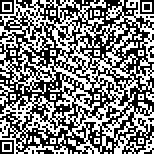| 本文已被:浏览 1578次 下载 986次 |

码上扫一扫! |
| 应用支气管镜治疗儿童肺不张407例临床分析 |
| 柳雪婷,李渠北,刘恩梅,莫诗,张瑶,高钰 |
|
|
| (重庆医科大学附属儿童医院,国家住院医师规范化培训示范基地,儿童发育疾病研究省部共建教育部重点实验室,儿科学重庆市重点实验室,重庆市儿童发育重大疾病诊治与预防国际科技合作基地,重庆 400014) |
|
| 摘要: |
| 目的:探讨支气管镜在儿童肺不张治疗中的作用。 方法:采用回顾性研究方法,选择 2014-2015 年在重庆医科大学附属儿童医院呼吸中心经胸部 X 线片或胸部 CT 检查诊断为肺不张并进行支气管镜检查及灌洗治疗的儿童共 407 例,对其原发肺部疾病、病原学、肺不张部位等项目进行特征分析,并通过胸部 X 线片或胸部 CT 随访复张情况。 结果:407 例儿童肺不张原发肺部疾病包括肺炎 297 例(73%)、肺炎合并先天性气道发育异常 57 例(14%)、支气管扩张伴感染 21 例(5%)、哮喘急性发作15 例(4%)等;除肺炎外,肺炎合并先天性气道发育异常见于<1 岁组及 1-3 岁组,哮喘急性发作常见于>3-6 岁组,支气管扩张伴感染常见于>6 岁组。 最常见的肺不张部位为右肺中叶。 常规呼吸道病原检测阳性率 61% (247/407),检出病原体依次为细菌(主要为革兰阴性杆菌)、支原体(主要在 3 岁以上患儿中检出)、病毒(主要在 1 岁以下患儿中检出)等。 灌洗液培养阳性率 34%(110/320),灌洗液与鼻咽抽吸物培养检出病原一致性为 69% (55/80)。 术后失访率 43% (177/407),随访复张率 90%(206/230)。 肺炎、外源性气道异物、哮喘急性发作患儿的复张率较高,肺结核和支气管扩张伴感染患儿的复张率较低,病程越长复张率越低,实施纤维支气管镜手术 1 次的患儿复张率 90%,2 次 98%,3 次及以上复张率逐渐下降。 结论:支气管镜在明确儿童肺不张病因及治疗中具有重要作用,可以根据临床情况尽早施行。 |
| 关键词: 肺不张 支气管镜 儿童 临床分析 |
| DOI:10.13407/j.cnki.jpp.1672-108X.2018.05.003 |
|
| 基金项目: |
|
| Clinical Analysis of 407 Cases of Children Atelectasis Treated with Bronchoscopy |
| Liu Xueting, Li Qubei, Liu Enmei, Mo Shi, Zhang Yao, Gao Yu |
| (Children's Hospital of Chongqing Medical University,National Demonstration Base of Standardized Training Base for Resident Physicians Ministry of Education Key Laboratory of Child Development and Disorders, Key Laboratory of Pediatrics in Chongqing, Chongqing International Science and Technology Cooperation Center for Child Development and Disorders, Chongqing 400014, China) |
| Abstract: |
| Objective: To assess the role of bronchoscopy in treatment of children with pulmonary atelectasis. Methods: A total of 407
cases in our hospital from 2014 to 2015 with radiology.diagnosed atelectasis, which all performed bronchoscopy, were enrolled in this
retrospective analysis. The etiology, pathogen, parts of atelectasis were analyzed, and the situations of re-expansion were follow up. Results: Four hundreds and seven cases of children atelectasis included 297 cases of pneumonia accounting for 73%, 57 cases of
pneumonia combined with congenital airway dysplasia for 14%, 21 cases of bronchiectasis combined with infection for 5% and 15 cases
of acute attack of asthma for 4%. Pneumonia with complication of congenital airway abnormalities was common in <1 year old group and
1 to 3 years old group, acute attack of asthma was common in >3 to 6 years old group, while bronchiectasis combined with infection was common in >6 years older group. The right middle lobe was the most common location of atelectasis. The positive rate of the detection of respiratory tract pathogens was 61%. The pathogens were bacteria (gram negative bacilli), mycoplasma (checked in >3 years old children), virus (checked in <1 year old children). The positive rate of the culture of lavage fluid was 34%. Concordance of bacteria culture between bronchoalveolar lavage fluid and nasopharyngeal aspirates was 69%. Postoperative loss rate was 43%, and the re-expansion rate was 90%. The re-expansion rate of children with pneumonia, exogenous airway foreign body and acute attack of asthma were high, the re-expansion rate of children with bronchiectasis combined with infection and pulmonary tuberculosis were low. The longer the course continued the re-expansion rate was higher. Bronchoscopy numbers of 1 time had re-expansion 90%, 2 times with
98%, and more than 3 times the rate decreased. Conclusion: Bronchoscopy plays an important role in the etiology confirming and the
therapy of children with pulmonary atelectasis. |
| Key words: atelectasis bronchoscopy children clinical analysis |